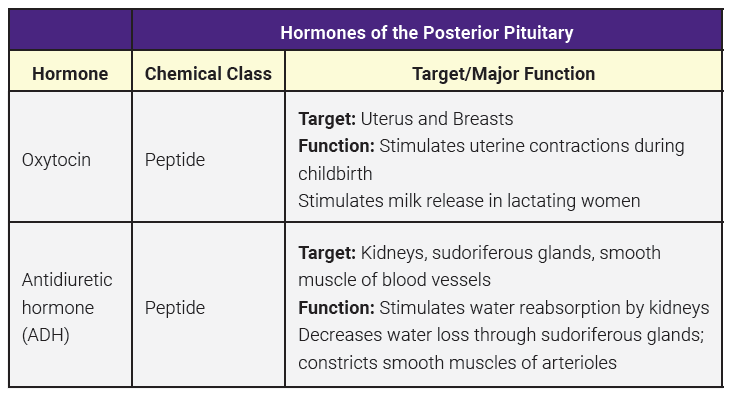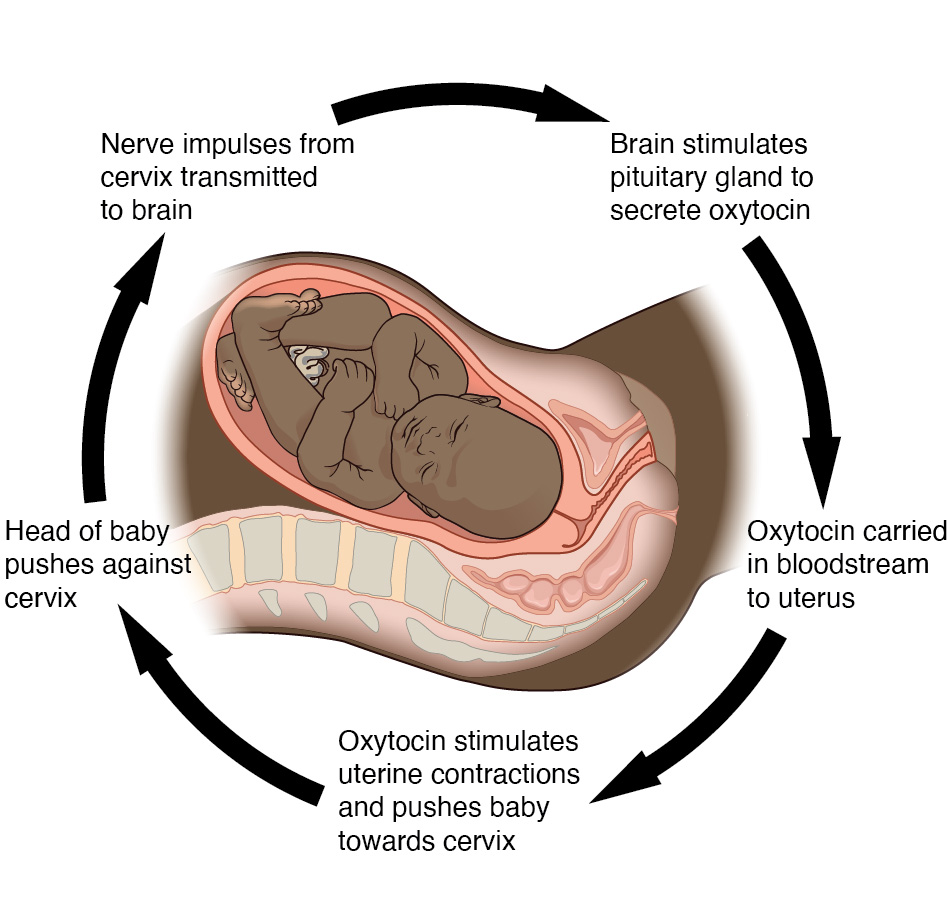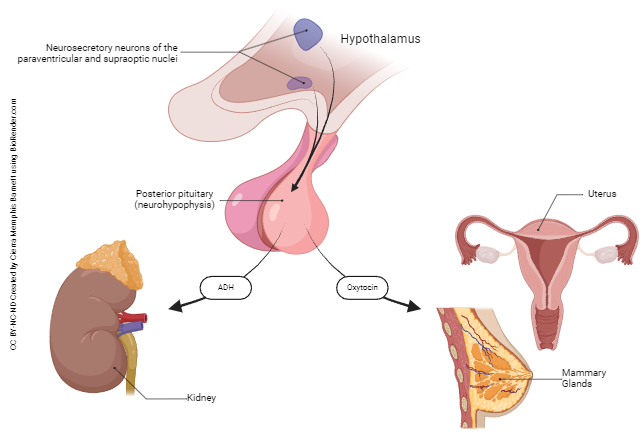Hormones of the Posterior Pituitary
Objective 4
Identify the source of the hormones secreted by the neurohypophysis, their target organs, and principal actions.
There are only two posterior pituitary hormones: antidiuretic hormone (ADH) and oxytocin. ADH is also called vasopressin.
As referenced previously, the hormones from the posterior pituitary are synthesized in the hypothalamus, secreted down special neurosecretory neurons to be stored and later released from the posterior pituitary.
The hypothalamic nuclei that produce the posterior pituitary hormones are the paraventricular and supraoptic nuclei. The axons from these nuclei form the hypothalamohypophyseal tract. The tract ends near capillaries of the posterior pituitary. When stimulated, the hormones are released into the bloodstream.

Oxytocin

Oxytocin has two target tissues during and after the delivery of a baby, the uterus and the breasts. Through positive feedback, oxytocin stimulates uterine contractions to help with the delivery of the infant. It also stimulates milk release (“let down”) from the breasts in response to the baby’s suckling.
The function of oxytocin in men and non-pregnant women is not clearly understood. There are theories that it promotes feelings of sexual pleasure during and after intercourse and encourages emotional bonding between the mating pair. So, some call it the “love” hormone.
Antidiuretic Hormone (ADH)
Have you heard of a diuretic? This substance increases the production of urine. Patients are often given a diuretic to help them get rid of excess fluid. If diuresis means increased production of urine, then the name antidiuretic hormone tells us this hormone opposes urine formation. ADH is a hormone that decreases the amount of urine the body produces. Special receptors in the hypothalamus, osmoreceptors, detect the amount of solute in the blood. If there is too much solute, there is not enough water. You could think of making your favorite powdered drink. If you don’t add enough water, the drink is very concentrated. It’s the same with your blood… if there’s not enough water, it’s too concentrated. If the blood osmotic pressure rises, in an effort to maintain fluid equilibrium, the body will try to increase the reabsorption of water and decrease the amount lost in the urine. ADH plays a major role in this endeavor.
ADH acts on three specific target tissues: kidneys, sudoriferous (sweat) glands, and the smooth muscle cells of blood vessels. ADH specifically influences the collecting tubules (ducts) in the kidneys to increase water reabsorption and limit the amount of water excreted as urine. As water reabsorption is increased, there is a resulting increase in blood volume and thus blood pressure. ADH also increases the blood pressure by constricting the smooth muscle cells of arterioles. Because of this, ADH is also known as vasopressin.
Media Attributions
- U14-017 Table Hormones of the Posterior Pituitary © Newton, Kathy is licensed under a CC BY-SA (Attribution ShareAlike) license
- U14-018a Organs Impacted by Posterior Pituitary Hormones © Barnett, Cierra Memphis is licensed under a CC BY-NC-ND (Attribution NonCommercial NoDerivatives) license
- U14-018b Oxytocin and Childbirth © Betts, J. Gordon; Young, Kelly A.; Wise, James A.; Johnson, Eddie; Poe, Brandon; Kruse, Dean H. Korol, Oksana; Johnson, Jody E.; Womble, Mark & DeSaix, Peter is licensed under a CC BY (Attribution) license


